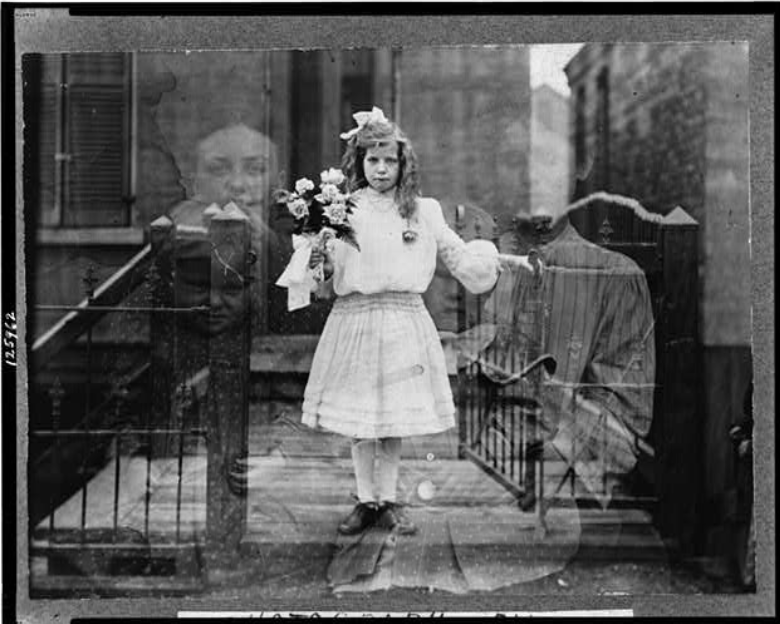Teach This Poem, though developed with a classroom in mind, can be easily adapted for remote learning, hybrid learning models, or in-person classes. Please see our suggestions for how to adapt this lesson for remote or blended learning. We have also noted suggestions when applicable and will continue to add to these suggestions online.

Look closely at the image of the “Double Exposure: Spirit.”
The following activities and questions are designed to help your students use their noticing skills to move through the poem and develop their thinking about its meaning with confidence, using what they’ve noticed as evidence for their interpretations. Read more about the framework upon which these activities are based.
-
Warm-up: Look closely at the image of the “Double Exposure: Spirit.” What do you notice? Look again. What else do you see?
-
Before Reading the Poem: Share a scary story or ghost story that you know with a partner. If you don’t know any scary stories, share some things that people are often frightened of. If you feel comfortable, share what scares you.
-
Reading the Poem: Now, read the poem “Annabel Lee” by Edgar Allan Poe silently. What do you notice about the poem? Annotate for any words or phrases that stand out to you or any questions you might have.
-
Listening to the Poem (enlist two volunteers to read the poem aloud): Listen as the poem is read aloud twice, and write down any additional words and phrases that stand out to you. (Teachers, your students might enjoy this song version of the poem by Stevie Nicks.)
-
Small-group Discussion: Share what you noticed in the poem with a small group of students. Based on the details you just shared with your small group and the resources from the beginning of class, what connections can you make between the poem and the image? How would you describe the “kingdom by the sea”?
-
Whole-class Discussion: What is the relationship between Annabel Lee and the speaker? What makes you say that? This poem includes lots of rhyme. Choose your favorite rhyme and defend it.
-
Extension for Grades 7-8: Watch this short TEDEd video about Edgar Allan Poe. After watching the video, what new understandings and questions do you have about the poem? Choose to create an image that depicts the poem or write a new poem inspired by “Annabel Lee.” Share your image or poem with the class.
-
Extension for Grades 9-12: Work with a small group to select a short story of Edgar Allan Poe’s to read. (Teachers, you may want to preselect groups and short stories for students.) After reading your chosen story, discuss the similarities and differences between the poem and the story. What did you enjoy most about the story? What did you find challenging?
“Lord, help my poor soul,” were Edgar Allan Poe’s last words. “No stranger to the mysterious and macabre, Edgar Allan Poe died amidst peculiar circumstances. On October 3, 1849, Poe was found semiconscious in Baltimore wandering around in cheap, ill-fitting clothing—so ill-fitting and unusually contrasted against Poe’s usual mode of dress, in fact, that many believed Poe’s own clothes had been stolen.” Celebrate Halloween and read more famous last words by well known poets.
